In the late 1960s and early 1970s, a series of bizarre events occurred in and around Highgate Cemetery in London. A number of ‘sightings’ of phantoms and spectres – particularly of a tall, dark-cloaked entity with burning eyes – led to speculation the capital had acquired its very own vampire.
Reports soon came from Highgate of tombs being broken into. Graves and bodies were desecrated and black magic rituals allegedly performed. Vampire hunters claimed to have broken open coffins, and plunged stakes into – and even burnt – the corpses of the ‘undead’.
Newspapers obsessed over these strange occurrences. TV programmes were made about a supposed nest of vampires in Highgate Cemetery and those promising to root out this ancient evil were interviewed.
On Friday 13th, March 1970, hundreds of would-be vampire hunters invaded the Victorian graveyard and engaged in a search for what was becoming known as the ‘Highgate Vampire’.
But did any sort of vampire exist? Who were those self-proclaimed vampire hunters, some of whom would dedicate years to trying to understand the phenomenon and to hunting the vampire down? And how could a late-20th-century city be gripped by a panic more at home in the pages of a Victorian gothic novel?
It’s time to pick up our stakes, grab our bulbs of garlic and go off in search of the elusive Highgate Vampire.
The Roots of the Highgate Vampire – Strange Sightings in a Decaying Graveyard
Highgate Cemetery was a far more ramshackle place than it is now. Once one of London’s most fashionable burial grounds, the graveyard was by the 1960s overgrown and neglected. Graffiti was scrawled across headstones; vandals had pulled doors off vaults; cracks and holes in tombs offered glimpses of coffins and – in some cases – bodies.
It’s not surprising that the dilapidated grandeur of this cemetery – with its ivy-entwined gothic monuments – would generate legends of hauntings and sinister creatures, and draw those with an interest in the occult and macabre.
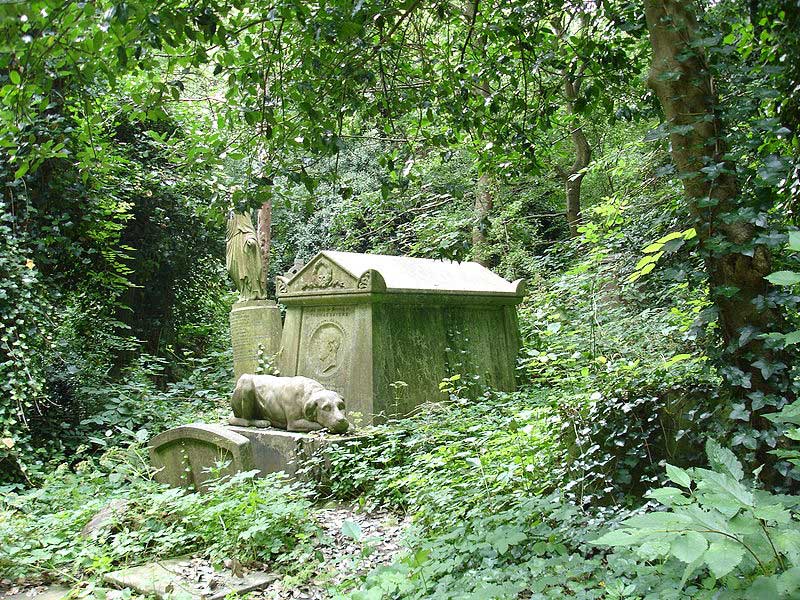
At the time of the Highgate Vampire, much of the cemetery was neglected and overgrown. (Photo: John Armagh)
According to David Farrant, a young local man with a passion for the paranormal, the first murmurings about a strange being began in late 1969. Farrant claimed that he spoke to two people – an old lady who’d been out walking her dog and a middle-aged accountant – who told similar stories about what they’d seen in the cemetery.
The old lady had been walking down Swain’s Lane, a road running through the graveyard, when she saw a tall dark figure with glaring eyes that seemed to be floating towards her. She felt the air turn icy cold. The accountant had got lost in the vast cemetery. A bell started to clang and he walked towards the sound, hoping it might guide him out of the necropolis. Instead, as the bell tolled, he became aware of something behind him and noticed the temperature plummeting. He turned round to see a tall dark figure that stared at him intensely before it vanished.
Intrigued, Farrant decided to investigate by spending a night in the graveyard. Farrant said, ‘At first I suspected it might just be an animal or someone dressed up or messing about because all these stories about vampires were in the news.’
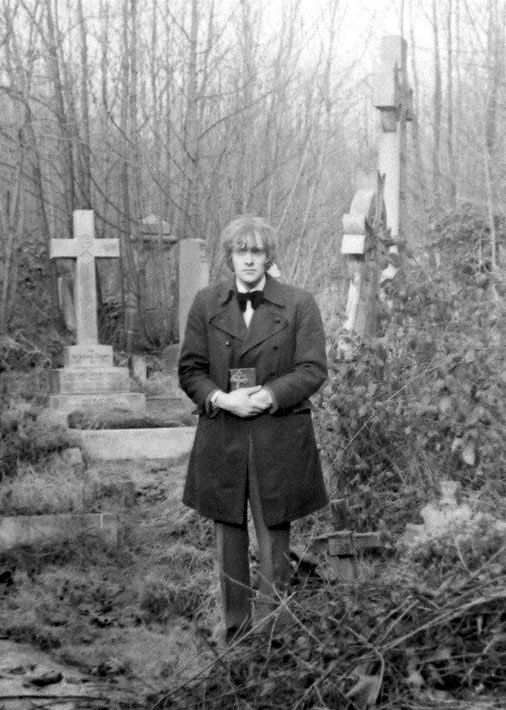
David Farrant in Highgate Cemetery (Photo from welcometonocturnia)
‘But around midnight I caught sight of a figure, about seven feet tall, that appeared to be floating just above the ground. I saw its face and two points of intense red light.’
‘The area turned icy cold as if I’d stepped into a refrigerator. The figure seemed to be draining me of energy and I felt I was losing control of my normal faculties. It felt like a vivid dream, like I wanted to wake up, but couldn’t.’
‘Realising I was under intense psychic attack, I repeated mentally a Kabbalistic incantation used to repel evil forces. It disappeared, but I decided the reports were true.’
In February 1970, Farrant wrote a letter to a local newspaper, the Hampstead and Highgate Express (also known as the Ham and High), asking if anyone had seen anything similar. A number of people responded, saying they had glimpsed apparitions in Highgate Cemetery and Swain’s Lane. These phantoms, though, were of a variety of descriptions, including a tall man wearing a hat, a ghostly cyclist, a lady dressed in white, a face grimacing through the bars of a gate, a person wading into a pond and a pale gliding entity. There were also reports of the sounds of bells and voices calling. There was little coherence in the types of spectres people claimed to have seen.
But another local young man with an interest in the supernatural, Sean Manchester, was intrigued by what he read. And Manchester would soon make public his ideas about what the apparition in the graveyard might be.
The Legend of the Highgate Vampire Emerges
Though Farrant had never claimed the dark figure he’d encountered was a vampire, Sean Manchester had little doubt that a genuine nosferatu was stalking suburban North London.
Manchester contacted the Ham and High and, on 27th February 1970, the newspaper published an interview – entitled Does a Wampyre Walk in Highgate? – in which Manchester outlined a theory to explain the monster’s presence.
Manchester alleged that ‘a King Vampire of the undead’ was buried in the graveyard. This vampire, who in life had been an aristocrat and practitioner of black magic in medieval Romania, had been transported to England in a coffin by his followers in the early 18th century. The vampire had been interred on the site that would later become Highgate Cemetery and his followers had also purchased a house for him in London’s fashionable West End.
The reason for the Highgate Vampire’s reappearance, Manchester said, was that rituals recently carried out by Satanists in the cemetery had reawakened this evil presence.
Manchester claimed to have spoken to local people who’d experienced vampiric activity. A schoolgirl, Elizabeth Wojdyla, had seen the vampire when walking down Swain’s Lane. Wojdyla began having nightmares, in which something evil tried to come into her bedroom. Eventually, two wounds appeared on her neck and she started to display symptoms of anaemia. Manchester and Elizabeth’s boyfriend filled her room with garlic, crucifixes and holy water and her condition soon improved.
Manchester spoke to another young woman, called Jacqueline, who said she’d woken in the night to find something cold clutching her hand. The next morning, she noticed deep tears in the flesh where she’d tried to force her hand free. Jacqueline and her younger brother soon developed a fascination that kept drawing them to the more dilapidated, western side of Highgate Cemetery, where – Manchester suspected – the vampiric ‘infection’ had occurred.
Manchester claimed that – after details about the Highgate Vampire became public – more people contacted him, all describing a similar tall dark being with blazing eyes.
Could There Have Been Any Truth in These Claims about Vampires and Occult Rituals in Highgate Cemetery?
In his interview, Manchester didn’t supply any proof to back up his ideas about the vampire coming from Eastern Europe. He would later state this part of the article was a journalistic embellishment, but in a book he published in 1985, The Highgate Vampire, Manchester does mention a foreign nobleman’s coffin being brought to Highgate.
There, however, appears to be more solid evidence concerning the occult ceremonies Manchester believed were taking place in the graveyard. Farrant said that in Highgate Cemetery he often found the ‘discarded remains of Satanist rituals … stubs of black candles, Satanic markings on the floors of tombs. In one small chapel-like tomb – with a marble floor and stained-glass windows – an inverted pentagram had been drawn on the floor.’
Like Manchester, Farrant felt such activities might have woken a long-dormant presence. Farrant claimed his research showed that – though the dark figure had not been glimpsed for many years before the rash of sightings in the sixties and seventies – people had seen a similar entity in the Victorian epoch.
According to Manchester, the police were well aware of black magic practices going on in the cemetery. It’s worth pointing out that Farrant himself was a member of a group that used the cemetery for rituals, though pagan Wicca ones rather than anything Satanic. Farrant stated that his group never interfered with graves or bodies, but – as many of their rituals had to be conducted outdoors – they used the cemetery because it was a secluded open space.
The late 1960s and early 1970s saw a revival of interest in all aspects of mysticism and the occult, including paganism, Eastern mysticism, Satanism, witchcraft and the teachings of Aleister Crowley, as well as the emergence of a number of less conventional Christian sects. It’s clear that an overgrown and secluded place like Highgate Cemetery could offer those engaged in the more outlandish aspects of this resurgence a suitably atmospheric space to carry out their ceremonies.
But little concerning the Highgate Vampire was likely to stay secluded for long.
The Highgate Vampire Heads into the Limelight
The Hampstead and Highgate Express continued to follow the ‘vampire’ story, re-interviewing Farrant and Manchester several times over the next months. In an article published on 6th March 1970, Farrant said he’d found dead foxes in the cemetery but couldn’t work out how they’d died, though he thought a vampire might have been responsible. Manchester claimed he’d also seen the foxes and suggested the vampire may have been using them as a food source. Soon it was alleged the animals had been found drained of blood with their throats ripped open.
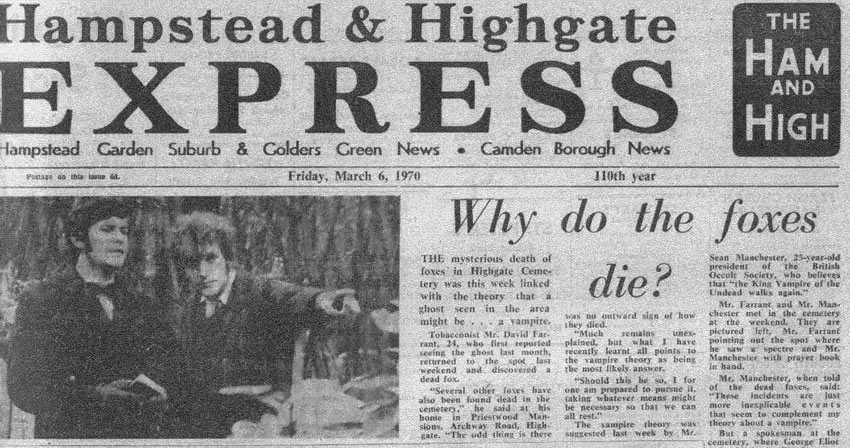
A press report about the dead foxes – food for the Highgate Vampire? Both Farrant and Manchester can be seen in the picture. (Image from moviesandmania)
Reports of the Highgate Vampire commotion soon reached the national and even international media. Articles appeared in the national press, television programmes were made by both ITV and the BBC, and even the international news agency Reuters featured the case.
The anxiety around the Highgate Vampire was part of a growing obsession with such creatures in British society. A number of TV programmes and horror movies had focused on vampires. One film – the Hammer Horror production Taste the Blood of Dracula (released 1970) – had actually been shot in Highgate Cemetery just a year before the Highgate Vampire incidents began. More chillingly, on the night of Halloween 1968, an act of desecration was discovered in nearby Tottenham Park Cemetery. Flowers had been taken from graves and arranged in circles with arrows pointing to a new grave, which was uncovered. A stake had been driven through the coffin lid and into the heart of the corpse.
As interest in the Highgate Vampire mounted, a rivalry grew up between David Farrant and Sean Manchester, with each belittling the other’s skills as an exorcist and each stating that he would be the one to expel the spectre lurking in Highgate.
A Mass Hunt for the Highgate Vampire
On the evening of Friday 13th March 1970, a programme aired on ITV featuring Farrant, Manchester, and others claiming to have seen supernatural figures around Highgate (as Friday 13th is an ominous day according to British superstition, this date is often chosen to broadcast programmes dealing with the occult). The programme even included live outside reporting from Highgate Cemetery. Within two hours of the programme being shown, hundreds of would-be vampire hunters began arriving in Highgate. They surged over the locked gates and walls of the necropolis despite the efforts of police officers to stop them.
The vampire hunters – many armed with weapons – searched frantically among the Victorian tombs. Those interviewed at the scene appeared to genuinely believe in the vampire, saying they were determined to find the monster and put an end to its diabolical actions. The mob caught no vampires that night though some insisted they’d glimpsed the tall dark figure.
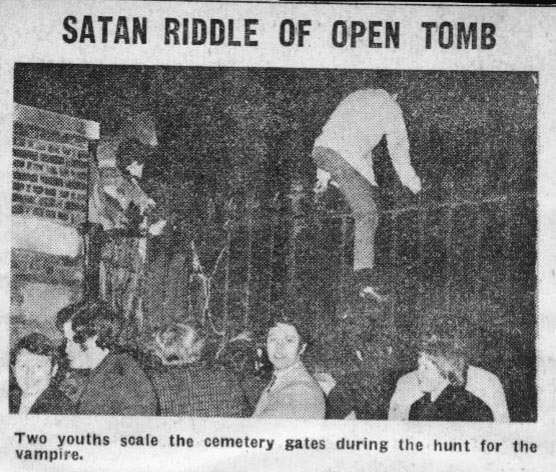
Mobs invade the cemetery to search for the Highgate Vampire. (Image from welcometonocturnia)
The anxiety and terror certainly seemed real. Manchester would later say the Highgate Vampire furore provoked ‘panic and fear and disbelief on a scale which one might anticipate if an alien had landed from outer space … the collective imagination had no defence against what we unearthed back in the late sixties in Highgate.’
Farrant, meanwhile, still unconvinced the spooky presence was a nosferatu, complained that media hysteria and local superstition had turned the Highgate entity into a vampire.
Attempts to Exorcise the Highgate Vampire
On that Friday the 13th, as the amateur vampire hunters swarmed over the cemetery, Manchester and some companions made their way to the entrance of one particular catacomb. Manchester had previously been led there by a sleepwalking girl, who claimed to have been bothered by the Highgate Vampire and had been exhibiting symptoms similar to Elizabeth’s. Unable to open the door, the group used a rope to climb down into the catacomb through a window. They found themselves in a vault with several coffins, one of which – a sinister-looking casket made of nearly black wood – didn’t seem to fit. Manchester and his companions performed an exorcism with holy water and garlic, and sprinkled salt around.
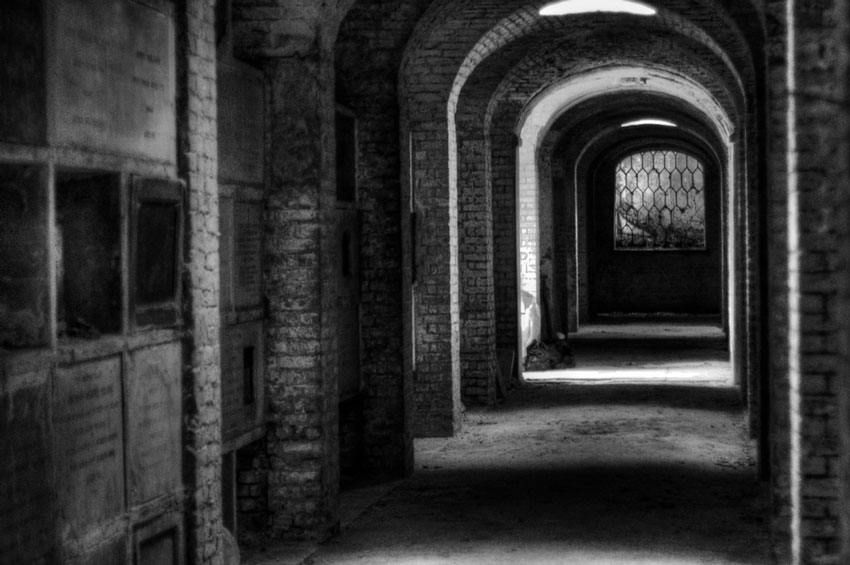
Some dilapidated catacombs in Highgate Cemetery
A few months later, on Lammas Day (1st August), the charred, decapitated remains of a woman were found near the catacomb. The police suspected this mutilated corpse had been used in a black magic ritual. After this, both Farrant and Manchester seemed to become more active. Farrant was apprehended by the police in the churchyard next to the cemetery one night, clutching a crucifix and wooden stake. Farrant was arrested, but the case against him collapsed when it came to court.
Manchester and his followers, meanwhile, were led to a different family vault by a female psychic helper. After forcing open the doors, they found a black coffin similar to the one they’d seen in the catacombs. Manchester, suspecting it had been moved by black magic devotees, levered open the lid.
‘It was only when we discovered – in the putrid chamber of that tomb in August 1970 – what we did and looked upon the horrific countenance of what was inside,’ Manchester said, ‘that we had absolute confirmation of what we were dealing with.’
Manchester wanted to drive a stake through the body, but a member of his entourage persuaded him not to, as interfering with remains was a crime in England. Instead, the group performed a ritual that used ‘seven crucifixes, four white candles and seven cups of holy water in a ceremony carried out by four men and a woman … to banish the spirit of evil or evil presence using the Latin formula. News of the spoken exorcism did indeed bring a sigh of relief to many living in the area.’
Manchester says the cemetery officials then bricked up the vault, with a crucifix and holy water left inside. But, Manchester reflected, the vault ‘didn’t remain bricked up for long.’
Farrant Also Attempts to Deal with the ‘Highgate Vampire’
Farrant and his group were also making efforts to deal with the strange presence. They decided to try to communicate with the entity and discover its purpose. In Highgate Cemetery, they conducted rituals using two circles, incense, candles and a medium. The first time they tried this, the press interrupted them. A year later, according to Farrant, another attempt saw the entity clasping the medium ‘by the throat. We had to break the circle. The area turned cold; she felt she was being enveloped by blackness; she felt something was trying to strangle her.’
Farrant was now convinced the entity was malignant. After hearing of incidents in which a sinister force had pushed people over in Swain’s Lane, he did more research. Farrant came up with a theory that the being wasn’t a vampire at all, but an evil presence that travelled along a ley line.
This ley line began at the Columbarium – a part of the cemetery where urns are kept – and ran across Highgate through two old public houses, Highgate Wood, and a block of flats built over a nunnery. Farrant claimed he found evidence of disturbing supernatural activity in all these places. Some people he spoke to said they’d glimpsed a tall dark figure. A manager in one of the pubs, apparently, saw a sight so horrific it turned his hair white and one of the flats built over the nunnery had to be exorcised.
Sean Manchester Hunts the Highgate Vampire Down
Despite the ceremony that Manchester and his colleagues conducted in the tomb, any relief was short-lived. Manchester said, ‘Strange occurrences failed to cease and more horrifying incidents ended any hope that we’d quietened the disturbance with a mere spoken exorcism rite. Further vampiric outrages were to follow.’
About three years later, Manchester claims, he and his associates discovered the same ominous black casket in the cellars of an abandoned and – suitably – gothic mansion on the borders of Highgate and Crouch End. Manchester suspected the coffin had been moved there to avoid all the attention the media and enthusiastic vampire hunters had focused on Highgate Cemetery. Manchester’s group dragged the coffin out of the basement, up the stairs and into the grounds of the mansion.
Manchester said, ‘Dawn was about to break, starting to send spears of bright illumination onto the macabre spectacle below.’
‘When the lid was removed, we beheld the same thing we’d seen in August 1970 – this was now the early part of 1974. Our quarry this time looked even more exaggerated, even more distorted than I remembered it, far worse than even that time in the Highgate vault. Its burning fierce eyes, under the many-furrowed brow, were staring … yellow at the edges with blood-red centres, unlike anything imaginable. The mouth was set in a cruel expression, the lips drawn back.’
Manchester drove a stake into the Highgate Vampire: ‘With a mighty blow, a sharpened shaft of wood impaled the creature’s heart. We witnessed the body shell cave in and quickly turn filthy brown and that itself soon became a sluggish flow of inhuman slime and viscera in the bottom of the casket.’
As Manchester believed that ‘cremation is recommended as the ultimate deterrent and preventative to the vampire’s nightly wanderings’, he and his followers then burned the coffin and what was left of the body. This took several hours, after which ‘all that remained was a great scorch mark and some bones that needed to be ground down and cast to the four corners or four winds of the earth.’
Following this exhaustive process, Manchester pronounced that ‘Highgate Cemetery is purged.’
Magician’s Feuds and the Aftermath of the Highgate Vampire Rumpus
Manchester’s claims to have destroyed the Highgate Vampire did little to end the feud between him and Farrant. There had even been rumours that the two would meet in a magician’s dual on Parliament Hill on Friday 13th April 1973, but this never happened. In 1974, Farrant was jailed after being convicted of interfering with remains and vandalising memorials in Highgate Cemetery. Farrant asserted that the damage had been caused by Satanists rather than him, but both Farrant’s imprisonment and the rumoured duel served to keep the Highgate Vampire in the public mind for several years.
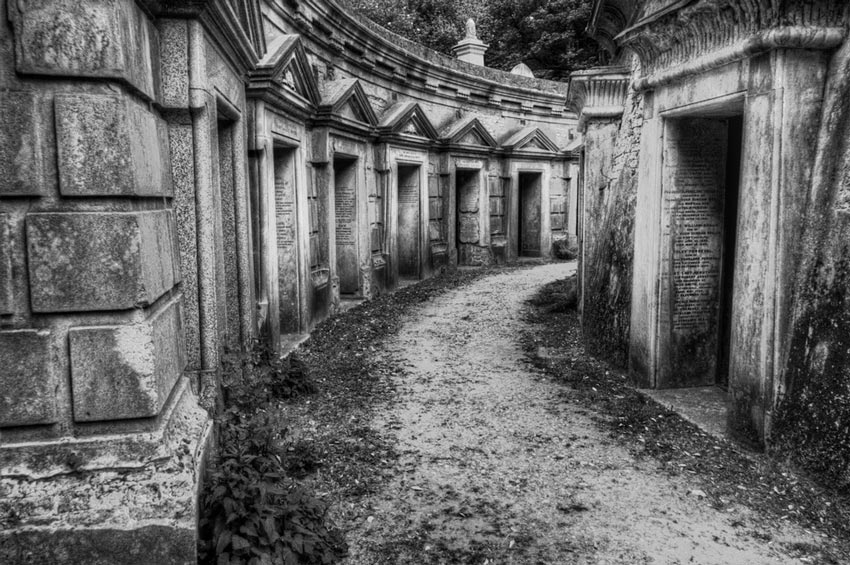
The Circle of Lebanon, in Highgate Cemetery
The quarrel between Farrant and Manchester dragged on for decades, with each claiming to be an expert exorcist while dismissing the other’s abilities. Both spent many years investigating paranormal phenomena, and both produced books, articles and websites – and gave many interviews – about the Highgate Vampire. The two men – and their followers – frequently sparred on social media. David Farrant died, aged 73, in April 2019, but Manchester still works as an exorcist and bishop in the British Old Catholic Church, a conservative sect that broke away from Roman Catholicism. After slaying the Highgate Vampire, Manchester maintains, he has destroyed dozens of bloodsuckers.
One of these incidents, apparently, involved a secondary contagion from the Highgate Vampire in Finchley’s Great Northern London Cemetery in 1982. A bite from that infamous nosferatu had corrupted the body of a woman called Lusia. Arriving at the cemetery, Manchester saw a spider-like creature about the size of a cat. He staked it and felt sure he’d put an end to the pollution of the Highgate Vampire for good.
But has the Highgate Vampire – or whatever it is – really been laid to rest? Farrant thought not and – ominously – a number of sightings of tall dark figures with burning eyes have occurred from the 1990s until the present day.
One witness – who claimed to have glimpsed the spook in 1991 – said, ‘He was very tall, well over six feet in height, and very thin.’
‘He wore a long black cape-like cloak and a top hat. His dress looked Victorian in style and he appeared all in black.’
‘He also appeared to glide and there was no sound. The ground was littered with leaves yet I heard no sound from him.’
Are There any Rational Explanations for the Incredible Tale of the Highgate Vampire?
As colourful and dramatic as the accounts of Farrant and – especially – Manchester are, there are those of a sceptical turn-of-mind, like myself, who feel tempted to question the Highgate Vampire narrative. Are there any explanations – social, cultural or psychological – that could account for the hysteria and bizarre events afflicting North London in the 1960s and 1970s? The Highgate Vampire was a strange case, but below are some attempts to rationally understand the phenomenon.
Bram Stoker’s Dracula and the Allure of ‘Legend Tripping’
‘Legend tripping’ is a term used by folklorists and anthropologists to describe a common pattern of behaviour in which groups of young people make expeditions to sites associated with horrific, tragic or supernatural events. These visits, which normally take place at night, can be seen as ‘rites of passage’ which enable the youngsters to demonstrate their courage and daring.
The sites of such ‘legend trips’ can include caves, tunnels, abandoned buildings and, especially, cemeteries. While most examples of legend tripping are relatively harmless, some expeditions may involve trespassing, vandalism and even occult rituals.
Both Farrant’s and Manchester’s entourages were groups of young people led by charismatic young men and their escapades did definitely tend towards the ritualistic. And these two groups were not the only ones engaged in legend tripping. There were also the hundreds of other vampire hunters and those practising the black arts. Might one bunch of legend trippers have been in competition with Manchester’s group, hiding the ‘vampiric corpse’ and doing their best to thwart Manchester’s attempts to track it down?
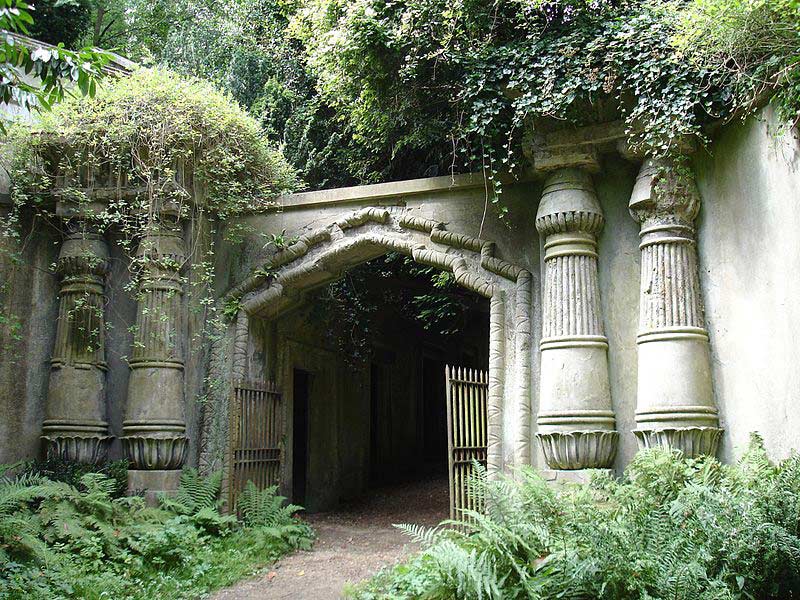
Could the search for the Highgate Vampire have been an example of legend tripping? (The gate to Highgate Cemetery’s Egyptian Avenue, photo John Armagh)
A related phenomenon is ‘ostentation’, which refers to the literal acting out of well-known legends and lore. Such ‘acting out’ can become a kind of game in which the borders of fantasy and reality get blurred. It’s been noted by many that the Highgate Vampire saga bears strong resemblances to Bram Stoker’s 1897 novel Dracula.
In Dracula, the Count mostly attacks young women and likewise young women, Manchester claimed, were those the Highgate Vampire chiefly pestered. Bram Stoker’s novel also includes sleepwalking victims; coffined vampires being discovered in putrid vaults; and the use of crucifixes, garlic and holy water to repel such monsters. Other similarities are the vampire’s Eastern European origins, his purchase of a fashionable house in the West End, and his red burning eyes. The Highgate area itself features in Dracula, as it’s where the aristocrat-made-vampire Lucy Westerna is entombed. The neo-gothic mansion is a reasonable stand-in for Dracula’s spooky castle and the Count – like the Highgate Vampire – is finally despatched by a stake through the heart.
The name Lucy (Lusia) is also connected with the secondary infestation in the Great Northern London Cemetery. Like in Dracula, the vampire there, according to Manchester, had trouble crossing running water, in this case the brook that skirts the graveyard’s northern side. Manchester’s hunt for the Highgate Vampire also bears similarities to the books of horror author Dennis Wheatley. Even the language Manchester uses to describe his adventures has a ring of the gothic novel about it.
Manchester has downplayed the similarities of his vampire hunting to works of literature, stating, ‘I certainly haven’t encountered anything that can be described as a Byronic figure from a gothic romance … that tradition in fiction has a lot of Byronic input largely due to John William Polidori’s novel The Vampyre … but no, the eyeless sockets of impenetrable darkness I’ve encountered bear no relation to that glamorised image.’
Still, it would seem that much of the Highgate Vampire mythos may well have been moulded by the propensities of local youngsters for legend tripping and ostentation.
Life Imitates Art then Art Imitates Life Again
It’s worth pointing out that popular culture at that time was awash with vampire images, which may also have inspired legend-tripping escapades. From the turn of the 20th century till the early 1970s, scores of vampire movies were made across the Western world. Between 1958 and 1970, the British-based Hammer studios alone produced five Dracula films, one of which – as mentioned above – was shot in Highgate Cemetery.
Numerous TV programmes and comics also featured vampires. In the 1950s, Glasgow saw a vampire hunt, in which hundreds of children invaded the city’s Southern Necropolis in search of a being known as the Gorbals Vampire. This incident was blamed on lurid American horror comics.
If the young vampire hunters in Highgate were proof of life imitating art, perhaps ironically, art was soon to be imitating life again. The Hammer Horror film Dracula A.D. 1972 was inspired by the Highgate Vampire case. The film – starring Christopher Lee and Peter Cushing – features a group of young hippies who, by participating in an occult ritual in an abandoned cemetery, reawaken a vampire.
The Highgate Vampire has also made it into comic books, including the Italian Il Vampiro de Highgate and Buffy the Vampire Slayer Series Nine. There is, apparently, even a video game under development, in which a computerised Bishop Sean Manchester prowls Highgate Cemetery, in a quest to impale the graveyard’s ‘head vampire’.
We might, however, ask why – around the time of the Highgate case – there was such interest in vampires, and the occult generally, in British culture.
The Vampire Haunts the Age of Social Anxiety
Vampire legends seem to be associated with times of social upheaval and change. Published in the dying years of the Victorian era, Bram Stoker’s novel has ancient folklore running up against innovations like railways, telegrams and phonographs. The exotic, immigrant figure of the Count embodies fears linked to colonialism, immigration, miscegenation and globalisation while frequent references to the ‘new woman’ reveal anxieties about the emerging feminist movement and changing gender roles. The eroticism of the vampire could be connected to the fact Victorian sexual mores were just starting to loosen.
Similar obsessions marked the resurgence of the vampire myth in the 1960s and early 1970s. The 1960s counter culture had unleashed the Sexual Revolution and in the seventies such changes were spreading out into wider society. Immigration was an issue as people streamed into Britain from its ex-colonies. And there were intimations of the tumultuous decade to come with its strikes, class conflict – class is continually emphasised in Stoker’s novel – increasing unemployment and economic uncertainties.
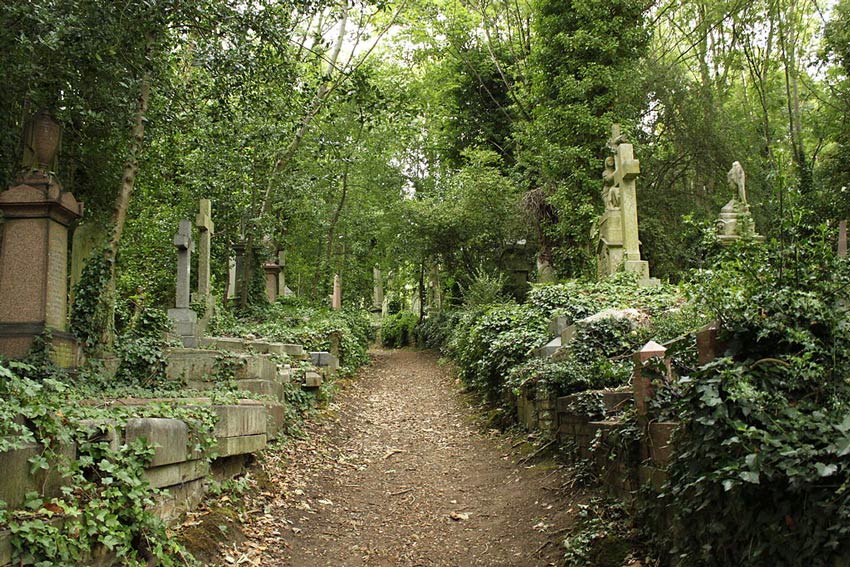
Highgate Cemetery (Photo: Panyd)
In societies undergoing turbulence and rapid change, there is often a fascination with the occult as people wish to flee, transcend or find answers to the troubles they’re experiencing. In the stormy decades of late Tsarist and early Soviet Russia, for instance, interest surged in Theosophy, Kabbalah, yoga, spiritualism, the practices of Siberian shamans, esoteric Christian cults and the semi-pagan folklore of the peasantry. With the uncertainties following the collapse of the Soviet Union in the 1990s, enthusiasm for such beliefs revived.
Reviewing the social changes that have taken place in his lifetime, Bishop Sean Manchester – in a 2013 interview with the Faith the Slayer podcast – said, ‘I have been amazed by how people on a day-to-day basis absorb and digest a diet of pure violence, pornography, depravity, decadence, degeneracy, in what they look at on the television, the films they watch, the things they read, the magazines they choose … It is beyond belief, this steady diet, hour after hour.’
‘It’s death, carnage, murder, awful court cases, ugly images of dead bodies, war zones … there is a drip-drip effect of something very ugly happening … it probably started way back in the seventies … in the early 1970s … The state of the world today would allow for evil to manifest almost anywhere.’
During times of change and social anxiety, monsters can come bursting out of the folkloric past and into the modern world. As well as the Highgate Vampire, examples include the Cardiff Giant, the Manchester Mummy, London’s Spring-Heeled Jack and Cumbria’s Vampire of Croglin Grange.
In 1970s North London, we can see how the presence of an atmospheric and dilapidated graveyard; the enthusiasm of youngsters for vividly acting out the contents of books, films and legends; and social anxiety driving an obsession with the mystical and occult could have all contributed to the bizarre episode of the Highgate Vampire.
(The main image on this post, and all other images unless otherwise stated, are courtesy of Andrea Pucci.)
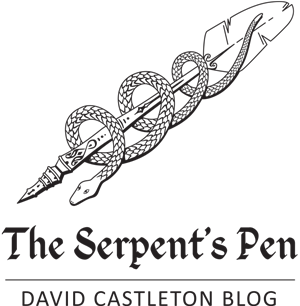
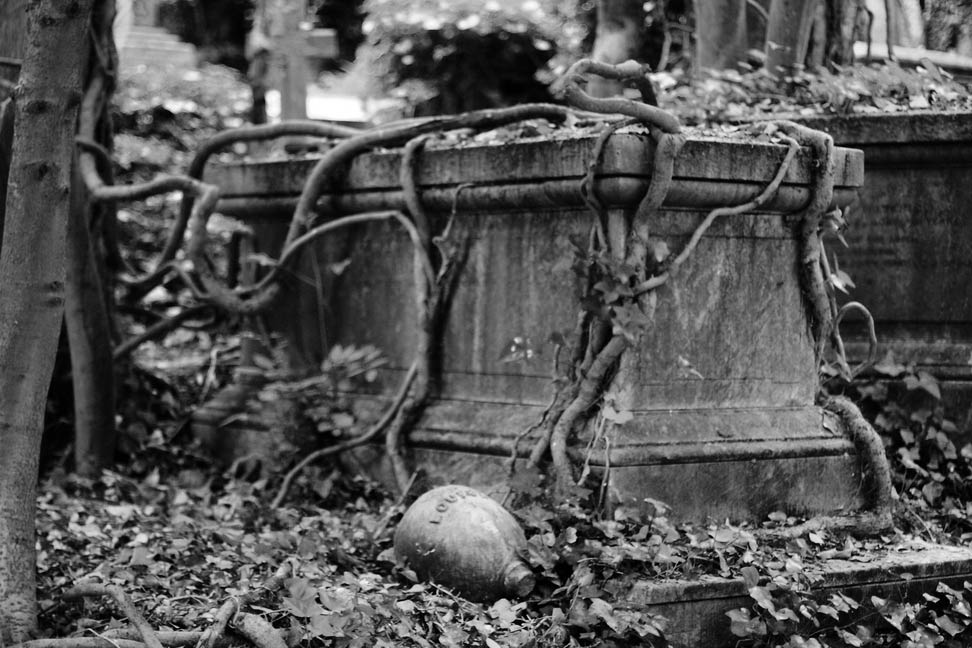
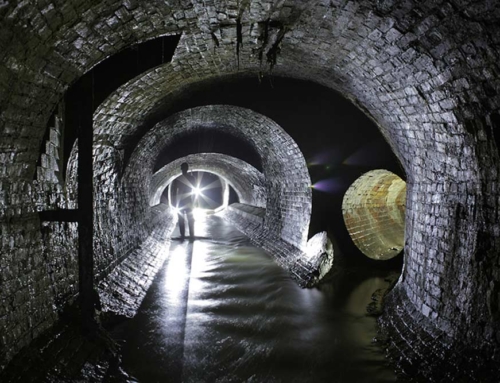
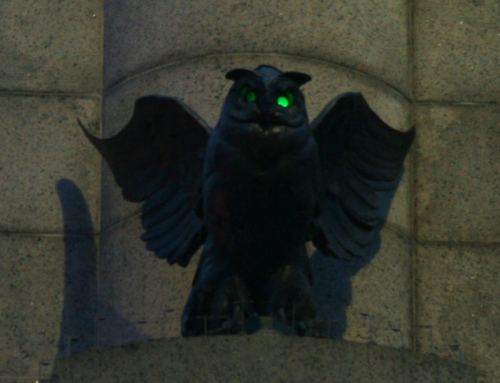
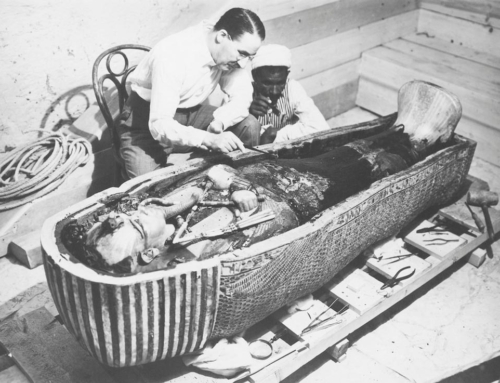
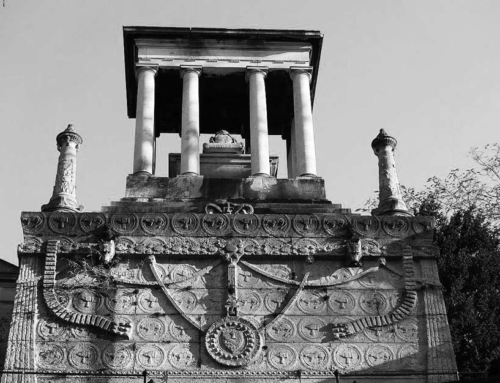
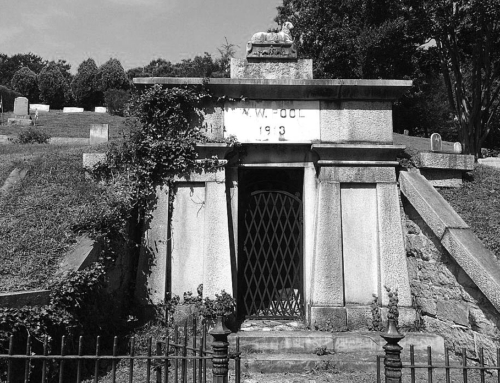
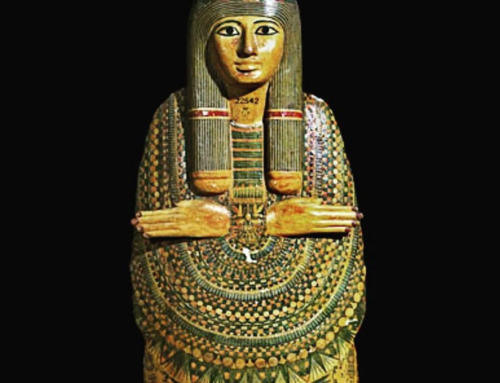
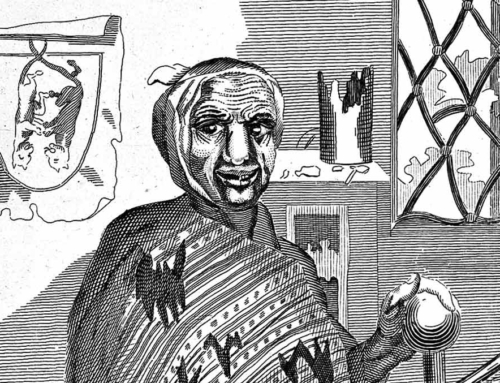
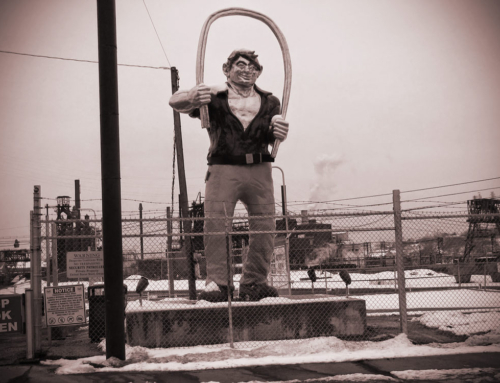
The similarities to Stoker’s novel and films based on it are striking, as you say, and you may see other derivations. I analysed them at length in an essay, still in print.
Many thanks for your comment, Ramsey. Another interesting article analysing such similarities can be read here: https://misssamperrin.blogspot.com/2010/12/bram-stoker-vs-highgate-vampire.html?m=1
In fact I commented there as well, drawing attention to further similarities!
I stumbled upon this little gem while researching Dracula for a PowerPoint presentation for my Popular Culture class. I was looking for photos and your website popped up. I am impressed with this site as it provided not only awesome pictures, but awesome information as well. I hope you do not mind my gathering data from this. I will cite it of course.
I don’t mind at all, Jennifer. Hope the presentation goes well. Glad you enjoyed the tale of the Highgate Vampire!
I really enjoyed reading this article I can honestly say I have not heard of the Highgate Vampire until now .But this is one of the places which are on my tick list to visit as I love looking around graves and the history they have left behind